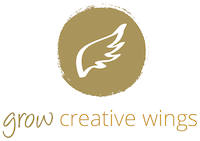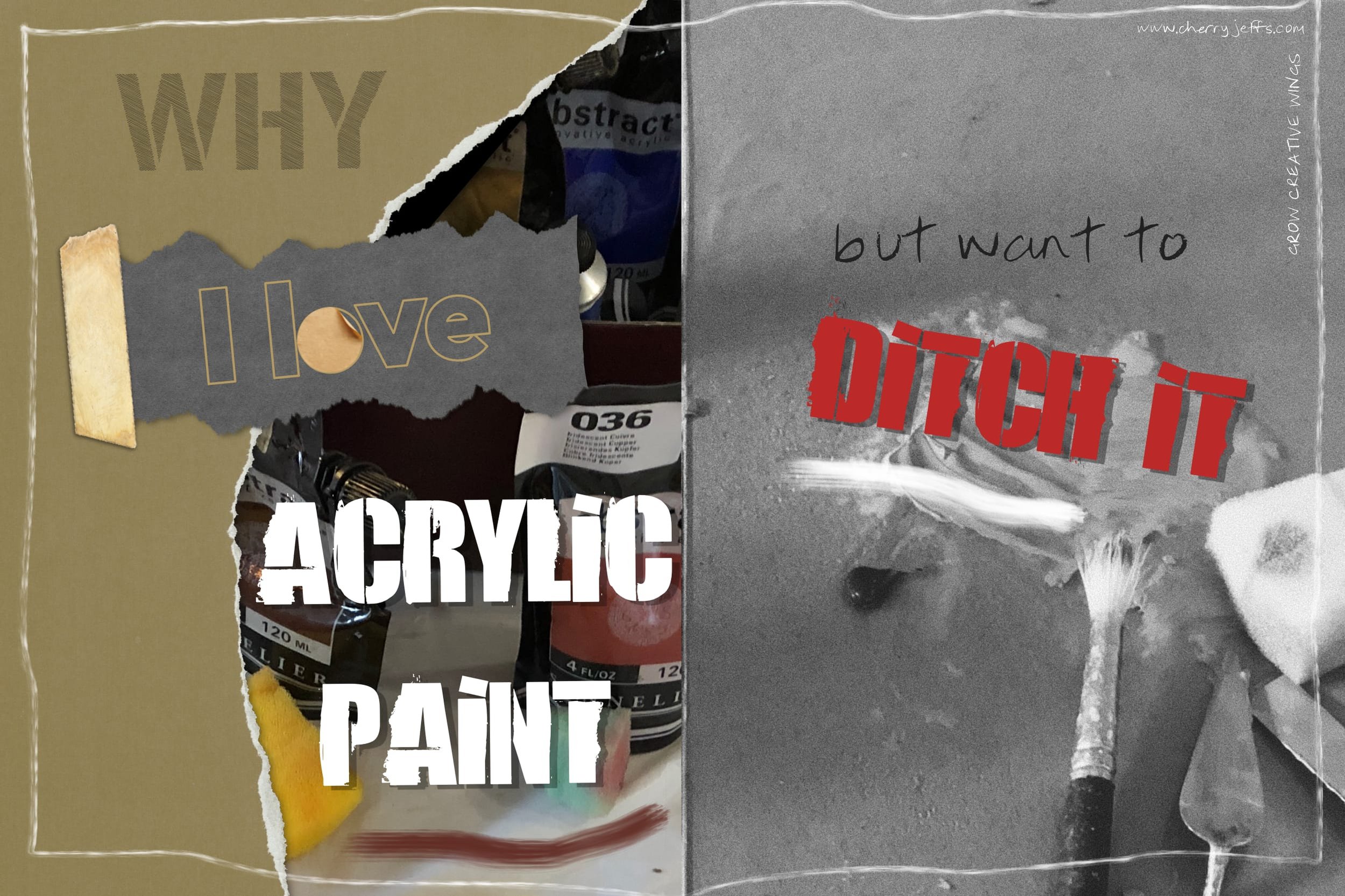Why I Love Acrylic Paint but Want to Ditch It
I was shocked! I’d used nearly a whole 500ml bottle of acrylic medium to make the structure of my artist’s book, The Pomegranate.
A friend of mine - previously tasked with getting supplies for me - says I have an acrylic medium addiction. But even by my standards, that’s a lot.
Why I started using acrylic paint
I resisted using acrylic paint for the longest time. The synthetic-sounding name put me off. I didn’t see myself as an acrylic sort of a girl.
But when I eventually tried acrylic paint in the early 2000’s, I found its quick drying time and opaque quality suited it my workflow perfectly. I like to be able to make mistakes and cover them easily. And I don’t have much patience for waiting for paint to dry.
So acrylic paint became an integral part of my creative process.
But I love our planet and my distress at climate change is growing.
The contradiction of using acrylic for my painting, Creative Fire
In 2013 I made a piece of artwork called Creative Fire. It was my response to the increasingly unbearable summers we were experiencing in Spain due to global warming.
It hasn’t escaped me how much of a contradiction this is. Acrylic paint is made from a synthetic resin binder called acrylic polymer emulsion. Basically liquid plastic!
So while I love the flexibility that acrylics gives my process, I recognise that the fast-drying nature of these synthetic materials is something I might have to sacrifice.
Compared to my other pieces, The Pomegranate is surprisingly heavy. Since it’s otherwise made of corrugated cardboard and tissue paper, the weight is mainly due to that 500ml of acrylic medium! I feel it as the weight of my ecological footprint.
Too deep a print by far.
If I make a similar piece to The Pomegranate in the future, I'll use a cornstarch or methyl cellulose paste instead of acrylic medium. That’s not a difficult switch.
And I’ve already switched up using acrylic medium as a varnish for cold wax medium. (This one is approx 97% biodegradeable.)
But substituting acrylic paint in my workflow is a much bigger ask. There’s no doubt that it’s going to require not only some changes in my process but also a change in the look of the work.
Of course I know that my tiny consumption of acrylic paint doesn't contribute to global pollution massively.
And I’m aware that a common practice among ‘environmentally concerned’ artists is to filter out the acrylic paint from the water. Then leave the left-over paint sludge to dry out before throwing it away. But this isn’t very practical for me as I’m often working while travelling. Plus it still begs the question of what’s going to happen to those plastic solids at the end.
(Throwing away the paint I already own without using it won’t make it much less polluting. So I’ll probably still be using acrylics for quite a while.)
But I believe in living according to my core values as far as possible. So I’m not happy with using so much of a material that has no place in our planet’s ecosystem.
Gouache and Gansai, eco-friendly alternatives to acrylic paint?
In 2020, I began to explore options for greener alternatives to acrylic paint. Ones that could fit with my workflow.
There are lots of suppliers offering earth pigments. And info about easels and paper using wood sourced from sustainable forests. But for commercially prepared ‘green’ paint alternatives other than oils, I found a lot of dead links or niche products that were so expensive that they would make my work untenable.
I have used powdered earth pigments before but mixed with - you guessed it - acrylic medium. But again, it’s a process that needs access to a well-ventilated studio rather than a make-shift workspace. And I could imagine myself procrastinating massively if I always had to make up my own paint. It would be a big bar to entry.
So I eventually came around to the idea of gouache or the Japanese equivalent, Gansai. (Gouache paint is an opaque water-medium paint consisting of natural pigment, water, a binding agent (usually gum arabic or dextrin) and sometimes additional inert material such as chalk. It has been used for at least twelve centuries.
Gouache can be re-wetted and dried to a matte finish and can also be thinned to resemble watercolour.
I decided that my creative voice is strong enough, my process robust enough, to subject it to some stress. I can even embrace the idea that different media will add an exciting new dimension to the work.
For the foreseeable future, I’ll be using this new (to me) medium alongside my existing acrylics as I don’t want to waste them.
How do YOU reconcile ‘being green’
with your creative process?
Have you struggled - or do you continue to struggle - with your own dilemmas in terms of materials you previously took for granted?
I've created a FREE online space to share ideas and links for artists who are trying to find eco materials to work with. It's a private community on Mighty Networks so you don't need to be on social media to join and no-one will be selling you anything over there.
It's a place to upload pics of our own work as well as links to books, websites and suppliers of interest and generally chat about our experiences. (Yeah, that's right, it's like those networks that used to exist before Facebook Meta took over everything.)
I’d love it if you’d join!





